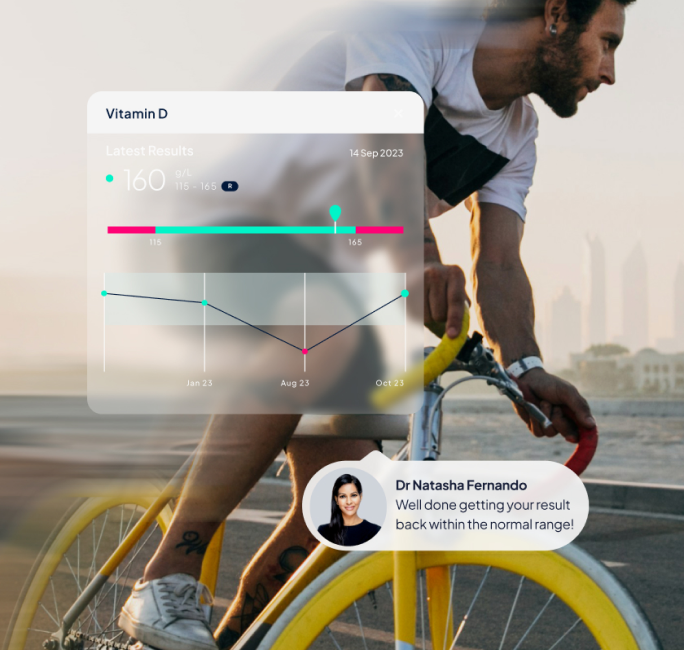Fructosamine is a protein that attaches to glucose in the bloodstream. Fructosamine testing can be used to help diabetics to monitor and control their blood sugar levels. This test measures the level of fructosamine in your blood.

Go beyond the numbers
Get ready to elevate your health understanding with a personalised doctor's report. Go beyond results and tap into expert insights tailored just for you.
- Actionable advice
- Expert support
- Tailored recommendations

How it works
You have the flexibility to choose what works best for you. Enjoy the comfort of having a friendly nurse visit your home for a quick blood draw, opt for a convenient visit to one of our nationwide partner clinics, or self-arrange a draw at a location that suits you.
Take control of your health - order your test today!

Track, improve, and monitor your health over time.
MyMedichecks is your personal online dashboard where you can view your results, access clear and simple explanations about individual health markers, monitor changes in your health, and securely store information about your medical history, lifestyle and vital statistics.
What's in the test?
Diabetes
Fructosamine
Learn more
How to prepare for your test
Prepare for your Fructosamine Blood Test by following these instructions. Do not take vitamin C (ascorbic acid) for one month before taking this test.
Test limitations
Reviews
FAQs
What can I learn from this test?
Our fructosamine test can tell you your average glucose levels over two to three weeks, as serum proteins have a lifespan of around 14 to 21 days.
What's the difference between fructosamine and HbA1c tests?
Both fructosamine and HbA1c tests can monitor sugar levels in the body, which is especially useful for diabetics as a monitoring tool for controlling their sugar levels. HbA1c is more common, but fructosamine may be useful where HbA1c cannot be reliably measured. That may be the case if you have anaemia, sickle cell anaemia, or thalassemia.
What is fructosamine?
Fructosamine is a marker of sugar control in the body that reflects the average blood sugar level over the previous two-three weeks. When glucose levels are raised over time, glucose molecules permanently combine with proteins in the blood. These combined molecules remain for the life of the protein and give you an average for the amount of glucose present in the blood.




